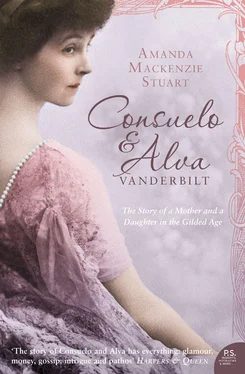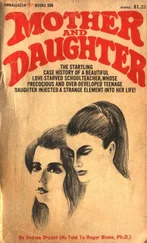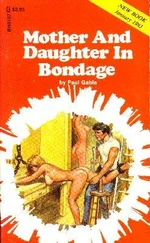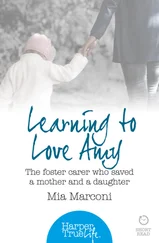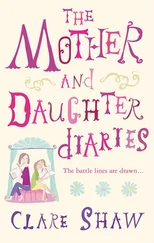WHEN SHE TALKED about the story of her early life in later years, Alva was only prepared to discuss the disintegration of her relationship with William K. Vanderbilt in general terms. She intimated to Sara Bard Field, however, that the start of married life had been dismal. Field, whose feelings about Alva were mixed (at best), wrote to Charles Erskine Scott Wood that Alva had stopped her in the middle of the lawn at Marble House, where no servant could eavesdrop, and had spoken of herself as ‘a girl of barely seventeen who did not fully know the sex mystery’. Alva had alluded to an ‘agony of suffering’. The memory brought ‘tears from her hard heart to her eyes’. She refused to allow Field to write about this, saying that ‘it was the sacred confidence of a woman’s heart’ and that ‘the children would object … and the Vanderbilts’. Sara Bard Field suddenly found herself in tears too, partly because her own experience with Wood was very different and partly because she felt that ‘a heart that could have been loved into beauty … has been steeled against its own finer and softer emotions. O, it is all fascinating what she is now telling me. Really, it is Life.’ 1
Leaving aside the fact that Alva was twenty-two and not seventeen when she married, it is possible that her wedding night did indeed come as a terrible shock. Her mother had died almost five years earlier, her elder sister Armide was unmarried and such ‘innocence’ was not uncommon. (One can only hope that Mrs Oelrichs, her chaperone at White Sulphur Springs, took it upon herself to have a quiet word.) The historians John D’Emilio and Estelle B. Freedman point out that there were also tensions in the sexual education of young men which did not help the process of marital adjustment. Many young men in New York in the 1870s had their first sexual experiences with prostitutes, ‘a poor training ground for middle-class bridegrooms’. 2 In pioneering studies carried out in late-nineteenth-century America, middle-class women talked of finding sex pleasurable, but it depended on the behaviour of their husbands. Young men used to encounters with prostitutes would often ‘bring to the conjugal bedroom a form of sexual expression badly out of line with what their wives might desire. On the other hand, some married men may have continued to visit the districts precisely because they could not find in their wives the kind of sexual availability, or responsiveness, they wanted.’ 3 The problems caused by this kind of mismatch were often exacerbated by fear of contracting venereal disease. There is some evidence in the later part of Alva’s life that she was familiar with this particular anxiety while married to William K. Vanderbilt.
For several years, the Vanderbilts found a way of resolving these early difficulties which cannot have been helped by the death of Murray Smith two weeks after the wedding. Until about 1885, however, the marriage had such forward momentum and such a triumphantly successful agenda, that both husband and wife ignored its disadvantages. Alva later hinted that the real difficulties set in after about ten years. ‘Not many men are in love with their wives after ten or twelve years,’ 4 she wrote. Elsewhere she remarked that ‘sex passion’ between man and wife generally lasts about ten years, and that after that time men of her class ‘amused themselves elsewhere’. 5 In the case of William K. and Alva, however, ten years of marriage coincided with the death of William Henry in 1885. William Henry’s fondness for Alva may have acted as a check on his son’s behaviour. After his death, this impediment disappeared and William K., always a handsome man, found himself in possession of a limitless fortune and much less to do. By 1885 the Vanderbilts had achieved most of their shared objectives: their yacht, the Alva and Marble House may have kept them busy – but these were opulent extras, icing on a well-baked cake.
In the second set of memoirs that Alva dictated to her secretary, Mary Young, after 1928, she suggests that having fought so hard to extract herself from the snares of genteel poverty, she now found herself faced with an even more pernicious form of exclusion. ‘It was a time’ according to Alva, ‘when men of wealth seemed to think they could do anything they liked; have anything, or any woman, they, for the moment wanted. And so, as a matter of fact, they very nearly could, and did. If a man was rich enough and had enough to offer there were, unfortunately, women willing and waiting to throw themselves at their heads, women who were younger and more attractive to them than the wives of whom they had grown tired.’ 6 Alva does not mention William K. by name when she talks of women insulted by their husbands’ ‘open and flagrant and vulgar infidelities’, but she comments that the conduct of J. Pierpont Morgan, Colonel John Jacob Astor, and others was notorious. ‘Col Astor’s yachting parties were public scandals. He would take women of every class and kind, even chambermaids out of the hotels of the coastwise cities where the yacht put in, to amuse himself and the men of his party on these trips.’ 7
And what of the wives of these rich men? These men did not seek divorce for there was no need. They simply set their wives aside, leaving them ‘to maintain the dignity of their position in the world, such as it was, and to care for their children, while they amused themselves elsewhere. That, they took it upon themselves to decide, was all that a woman was good for after they had finished with her in ten years or less of married life.’ 8 No-one was prepared to challenge the convention by which a society woman in her prime ignored adulterous behaviour on the part of her husband and withdrew into a kind of half-life, while bravely maintaining a public front of domestic respectability. ‘It was considered religious, dignified and correct for the wife to withdraw into the shadows while her husband paid the family respects to the sunshine … she was supposed to get her sunlight by proxy through the husband.’ 9 It was, in Alva’s view, an intolerable by-product of monopoly capitalism, a uniquely American form of purdah: the seclusion of cast-off wives enforced by rich men whose solidarity in the matter was perceived to be indestructible.
When she recalled working with Richard Morris Hunt on Marble House, Alva remarked that the period from 1886 and 1892 marked ‘some of the saddest years of my life’. 10 It is possible that she welcomed long cruises on the yacht as a way of controlling her husband’s infidelities. Later, the New York World recalled that she had looked unhappy for much of this time. ‘She looked both weary and sad, and people wondered why it was. They said it was because she was naturally of a peevish and discontented disposition. They said it was because she had achieved every ambition possible to her, and was made wretched because there was nothing further to achieve … But gradually the truth crept out and it was known that Mrs Vanderbilt was wretched because her husband had broken his marriage vows, not once but over and over again.’ 11
The tension certainly affected sixteen-year-old Consuelo. ‘I had reached an age when the continual disagreements between my parents had become a matter of deep concern to me. I was tensely susceptible to their differences, and each new quarrel awoke responding echoes that tore at my loyalties.’ 12 On 16 July 1892, in an apt metaphor for the disintegrating state of the William K. Vanderbilt marriage, the Alva sank. Bound for Newport from Bar Harbor, the yacht was forced to anchor in dense fog off Monomoy Point where she was accidentally rammed by the mellifluously named freight steamer, H. F. Dimmock. William K. reacted by commissioning an even more luxurious – and rather more seaworthy – yacht, the Valiant.
Читать дальше
